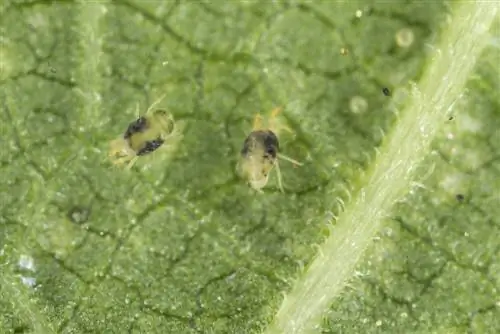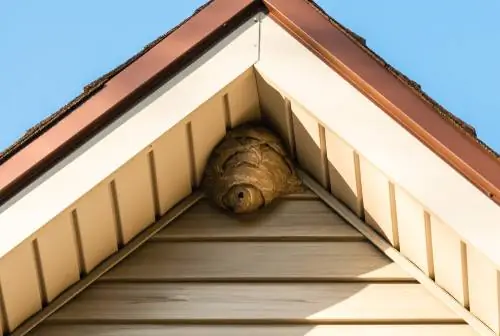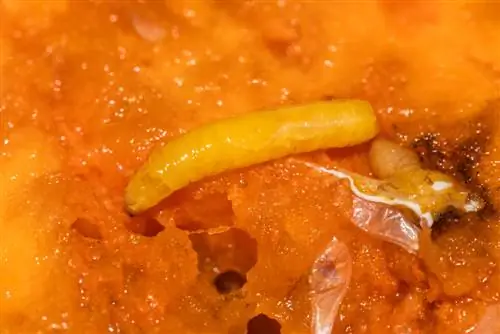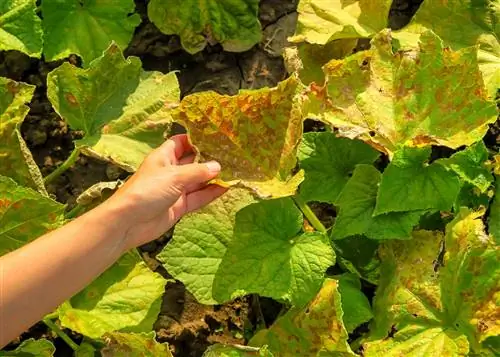- Author admin [email protected].
- Public 2023-12-16 16:46.
- Last modified 2025-01-23 11:21.
The boxwood has been extremely popular with gardeners for more than 2000 years. But not just these, because the evergreen tree is often attacked by a wide variety of pests. Mites such as the boxwood spider mite or the gall mite are arachnids and feed on the leaf sap of the plant.
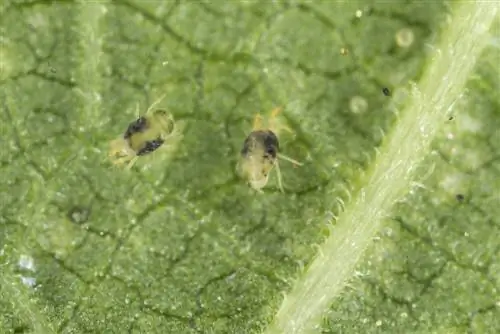
How do you fight mites on boxwood?
Boxwood mites, such as the boxwood spider mite and the gall mite, can be combated by regularly spraying with water, cutting back affected parts of the plant and using oil-based pesticides. Preparations based on neem or rapeseed oil are particularly effective.
Box tree spider mite (Eurytetranychus buxi)
Like various other pests - such as the dreaded box tree borer - the box tree spider mite is also an immigrated parasite. The mite species originally comes from North America, from where it came to Europe through plant imports. You can recognize an infestation by the following characteristics:
- White dots are visible on the leaves.
- The leaves gradually turn rusty red.
- The undersides appear grayish, fine webs may be visible.
- These can be easily recognized after spraying with a fine mist of water.
- If the infestation is severe, the leaves will be dropped.
Fighting boxwood spider mites
Spider mites are tiny, around half a millimeter long, and can hardly be seen with the naked eye. They appear more frequently in hot, dry and sunny locations and can be driven away by increasing humidity. You should therefore regularly spray boxwood with water in vulnerable locations and when the weather is appropriate. In the case of a more severe infestation, oil-based products are very helpful and should be used in autumn and early spring - in this way you destroy the overwintering brood.
Gall mite (Aceria unguiculatus)
The so-called shoot tip gall mites are also extremely small and barely visible arachnids. As the name suggests, they prefer to sit on the tips of the shoots as well as on the young leaves and in the buds. Here they tap the leaf sap of the boxwood and cause considerable damage in the event of a severe infestation. Typical characteristics of a gall mite infestation are:
- Only the shoot tips are deformed.
- It looks compressed, the leaves are deformed.
- The rest of the plant initially shows no damage.
- Bulges resembling knots appear on the leaves.
- Leaf buds have a thick instead of elongated shape.
Fighting gall mites
Infected plant parts should be cut back immediately, ideally at the first signs in spring. If the infestation is severe, only vigorous pruning and treatment with oil-based pesticides often helps.
Tip
Whether plant lice or mites: preparations based on neem or rapeseed oil have proven to be particularly effective.

